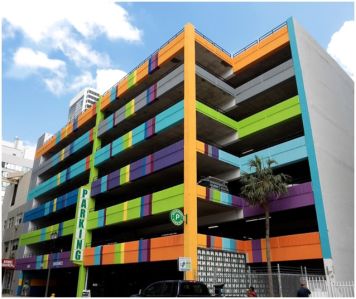Singer on Balance-Sheet Lenders; Time to Beef Up Origination Staffs
By Tom Acitelli March 23, 2011 1:34 pm
reprints
Lenders with the ability to use their own strong balance sheets are flexing their muscle on both sides of the risk-reward matrix: winning deals by offering attractive pricing for both core and value-add deals and making it difficult or impossible for both CMBS lenders and non-institutional funds to compete for those deals.
Last month’s column explored the way that two major equity investors are dealing with their inability to purchase good properties at elevated cap rates. In recent weeks, a trend has emerged in conversations with loan officers at several major domestic and foreign lending institutions: While low-cost competition rages over a growing supply of simple, attractive and stable “bread and butter” loan opportunities, a subset of the lending community is forsaking the fray and implementing alternative strategies to generate higher yields.
At one domestic life insurance company, a loan officer who has spent the past 15 years focused exclusively on debt told me that his company has tepid interest in debt transactions because the yield at which the good deals can be “won” is just too low. Instead, he has been steered toward seeking opportunities to purchase properties, either outright or in joint venture with operators. This is quite clearly not the result of attractive cap rates, but rather a belief that the combination of a few additional points of yield that can be achieved in the early years and the possibility of real upside going forward is worth the risk of entering the deal at 100 percent of the capital stack.
One major foreign bank has a similar goal-using its willingness to employ its strong balance sheet to achieve higher yield-but is utilizing a different strategy to achieve it. This bank, which has the capacity and willingness to fund nine-figure loans without co-investors, is in the market primarily for debt transactions with higher risk profiles. They are actively seeking condo inventory loans, and will also make full-LTV fundings on properties with lease-up risk. A major difference in their worldview, as compared to most other major banks interested in funding large non-recourse loans on their own balance sheets, is a willingness to focus on intrinsic value rather than in-place cash flow.
THESE STRATEGIES WERE previously the purview of hedge funds and investment banks rather than commercial banks and insurance companies, a distinction that is critically important to the institutions’ ability to capture market share-since even their increased yields are significantly below the minimum yield requirements of investors in hedge funds, and not subject to the vagaries of the CMBS bond market.
This is an especially important distinction for transitional and higher-leverage deals, as the yield differential sought by institutions for stepping into higher-risk deals may be only a 300 to 500 basis point increase, leaving their pricing still dramatically lower than the funds.
Both of these particular institutions’ strategies are designed around a belief that there is inherent upside in today’s market: vacant space will lease, and condo-unit inventory will move. Even more important, there is a clear implication that senior management’s performance metric has shifted from capital preservation (like in 2009 and 2010) back to value creation since these strategies provide strong evidence that the desire for increased yield is finally trumping safety concerns, as long as deal fundamentals are strong.
Whether this shift merely implies a belief that property values and cash flows are in a trough or will actually create a self-sustaining push upward is not yet known, but either way, it is good news for owners and brokers.
Despite this change in strategy among a subset of institutional lenders, there remains a much larger and remarkably motivated group willing to compete to provide extraordinarily low-cost financing, including fixed-rate terms of 15 to 20 years or longer. With the recent drop in treasury yields as a result of the horrendous events in Japan, mortgage rates of less than 5 percent have again become possible for loans as long as 15 years on commercial properties, with even lower rates for multifamily properties.
For a variety of reasons, there is, finally, an influx of transactions that underwrite well on today’s more stringent standards. However, with few lenders having staffed back up to anywhere near old levels, current origination staffs are beyond fully extended. For the first time in years, it appears that significant pressure is being put on the lending community to increase origination staffs in order to take advantage of good new opportunities–which is the best news of all.
Scott A. Singer is principal of the Singer & Bassuk Organization, LLC, and a member of REBNY’s Finance Committee. He writes regularly for The Commercial Observer about financing.


